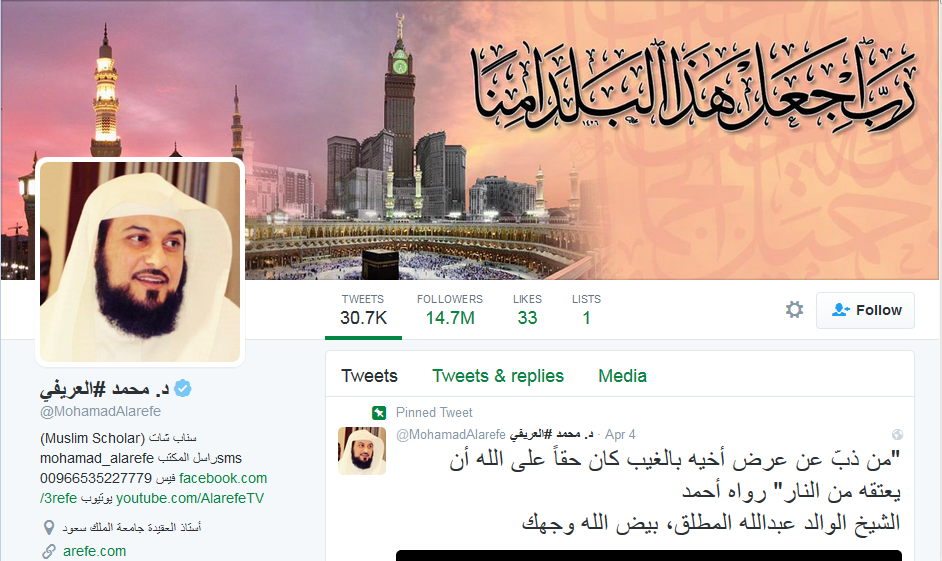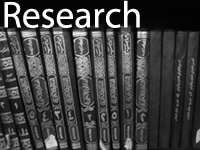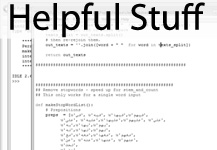
Islamic Authority in the Internet Age

In 2013, Muhammad Al-Arayfi, a Muslim preacher who has upended the Saudi religious scene by amassing fifteen million Twitter followers, was forced to defend himself on Al-Jazeera satellite television against claims that he had issued an Islamic legal ruling via Twitter permitting illicit temporary marriages for Syrian rebels. His explanation? Someone had used Photoshop to create and circulate fake Twitter posts in his name, in an attempt to hijack his "brand." For Al-Arayfi, the disruptive power of the Internet had come full circle.
Has the spread of the Internet fundamentally changed the nature of Islamic authority? In Islamic Authority in the Internet Age, I use new theory and evidence to show how the Internet is radically reshaping the authority structures of Islam, a global religion with 1.6 billion adherents. I combine statistical analysis of "big data" with immersive ethnography to examine new data sources, including the online writings of female Salafi preachers, the poetry of Internet jihadists, user ratings of online fatwas, and more. Findings from my preliminary research suggest that the Internet is having surprising effects: elevating the status of female authorities in some of the most conservative strains of Islam and forcing traditionally staid Muslim clerics to turn to memes and clickbait in their fight for continued relevance.
I define Islamic authority as influence over lay Muslims in religious matters. Although Islam does not have a formal priesthood, both Sunni and Shia Islam have a clerical class that wields religious authority. Throughout much of Islamic history, these religious elites have allied with political rulers, lending legitimacy in exchange for a near monopoly over the religious sphere. These representatives of "official Islam" still dominate state-run religious hierarchies in the Middle East, but their authority has waned in recent decades as ordinary Muslims are abandoning old authorities and embracing new ones. Islam is in the throes of a crisis of authority.
The prevailing scholarly suspicion is that the Internet generally undermines "traditional" clerics, but in many cases, this is incorrect. As a counter-example, consider the case of Yusuf Al-Qaradawi whose satellite TV show and vast web presence have made him one of the most famous Sunni clerics in the world. Al-Qaradawi's authority has been enhanced by the Internet, not undermined, but he counts as a "traditional" scholar by virtue of this credentials from Al-Azhar University, the premier institution of Sunni Islamic education.
Instead of focusing on whether clerics are "traditional" or not, I examine the precise sources of authority on which different clerics rely. Generally speaking, clerics derive their authority from one of three sources: pious scholarship that earns them influence through their scholarly reputation, a government appointment that gives them influence as the designated leaders of religious institutions, or popularity with lay Muslims who can grant a cleric influence by following their teachings. I argue that the spread of the Internet undermines some clerics and promotes others, depending on each cleric's primary source of authority. Because the Internet facilitates communication and information-sharing, it enhances the authority of clerics who rely on popularity by allowing them to reach larger audiences in new ways. Other clerics benefit less. Clerics who rely on pious scholarship for authority do not gain much from the public visibility of the Internet, and clerics who derive authority from government appointments are often undermined by the Internet because it loosens their monopoly on the religious sphere and exposes them to uncensored criticism. By differentially benefitting certain clerics over others, the Internet is reshaping the landscape of authority in Islam in favor of those who derive their authority from popularity.
I will test my arguments using quantitative and qualitative analysis of diverse new data sources:
- A census of all Arabic-speaking Muslim clerics writing on the Internet as of 2017.
- A statistical analysis of a representative sample of 500 clerics drawn from the census.
- Ethnographic observation of a government Imam training facility in Morocco.
- Text analysis of 21,000 online writings by 173 male and 43 female Salafi preachers.
- Page views and user "likes" for over 100,000 documents from online "fatwa banks."
- A collection of the websites of 91 Shi'i grand ayatollahs.






